Key points
Queen Elizabeth is a character in Richard III, a history play by English playwright William Shakespeare.
She is married to King Edward IV, who has taken the English throne after winning a key battle in the Wars of the Roses.
Richard, Queen Elizabeth’s brother-in-law, plots to become king and murders many members of Queen Elizabeth’s family.
Did you know?
Queen Elizabeth’s marriage to King Edward IV is controversial. Although Queen Elizabeth came from the upper-class Woodville family, her social status was not considered high enough to become a queen. Richard uses this to criticise Queen Elizabeth and her family and to encourage conflict in the royal court.
Plot summary
Queen Elizabeth’s key moments
Click through the slideshow to see Queen Elizabeth’s key moments

Image caption, These images are taken from a 2016 production of Richard III starring Ralph Fiennes as Richard and Aislín McGuckin as Queen Elizabeth. Queen Elizabeth is married to the king, Edward IV. There are conflicts within the royal court and some of the nobility resent Elizabeth’s influence.
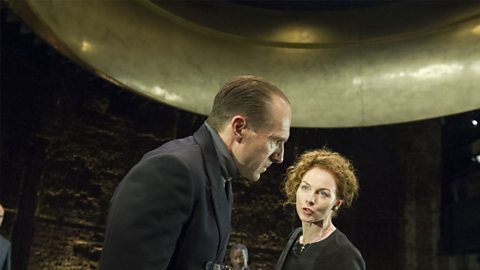
Image caption, When her husband dies, Queen Elizabeth loses her power, and her young sons are left vulnerable. Her brother Earl Rivers and her son from her first marriage, Lord Grey, are executed by Richard.
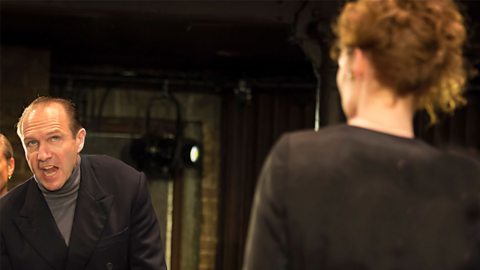
Image caption, After Richard takes the crown, he has his nephews, Queen Elizabeth’s young sons, murdered. Elizabeth grieves the deaths of her sons and joins the other women in cursing Richard.
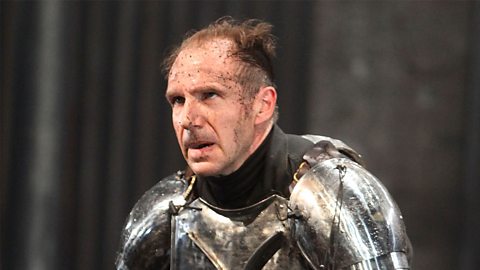
Image caption, When Richard wants to marry Queen Elizabeth’s daughter, Princess Elizabeth, she secretly promises her daughter to Richmond instead. Richmond defeats Richard in battle and becomes the new king, Henry VII. Princess Elizabeth marries Richmond and becomes queen.
1 of 4
Character traits
Strong
Queen Elizabeth is a strong character who stands up to Richard and confronts him about his crimes. She is also a confident and intelligent character who is able to match Richard’s sharp wit.
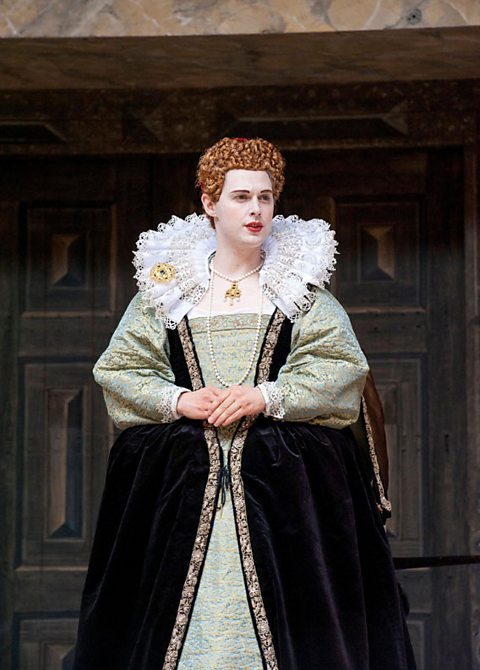
Vulnerable
Queen Elizabeth is left vulnerable when her husband, King Edward IV, dies. When Richard is given the role of Lord Protector, he has influence and power over Queen Elizabeth and her family. As a widow, she has very little power to stop Richard’s villainous plans to murder her family.
Protective
Queen Elizabeth knows that Richard is her enemy, and she tries to protect her sons and family. However, she underestimates Richard’s evil nature and is not able to save her two young sons. She can protect her daughter by leading Richard to believe she’s agreeing to their marriage, but secretly promising her daughter to Richmond.

Relationships
Family
Before her marriage to King Edward IV, Queen Elizabeth was married to Lord Grey. Queen Elizabeth is supported at court by her two sons from this first marriage, the Marquis of Dorset and Lord Grey, and also her brother Earl Rivers.
Queen Elizabeth’s children with King Edward IV include Prince Edward, Richard, Duke of York and Princess Elizabeth.
Prince Edward is the heir to the throne but is considered too young to rule when his father dies. Richard, his uncle, is named Lord Protector and has the power to rule until Prince Edward – now King Edward V – is old enough to rule.
Enemies
There is conflict in the royal court as some noblemen resent the power given to Queen Elizabeth’s brother and her sons from her first marriage. Elizabeth has used her influence to make sure her family have high-ranking positions.
Richard hates Queen Elizabeth and her family and accuses her of having his brother Clarence imprisoned. Richard is also jealous of the influence Queen Elizabeth has over her husband, King Edward IV.
What is Queen Elizabeth’s relationship with the other women at court?

Queen Elizabeth and Lady Anne share a hatred of Richard. Although Lady Anne has married Richard, she quickly realises he is using her to secure his position. Even Richard’s mother, the Duchess of York, joins her daughter-in-law, Queen Elizabeth, in condemning Richard.
Although Queen Margaret and Queen Elizabeth dislike each other, Queen Elizabeth later begs Queen Margaret to teach her to curse Richard. The senior women of the court are united against Richard and, despite their lack of power, they openly challenge and insult him.
Changes in character
In the royal court, a queen would often lose her power when the king died. Although Queen Elizabeth had influence and power as queen, as a widow she is powerless. She is worried that her children are in danger and in the end she is unable to save some of them.
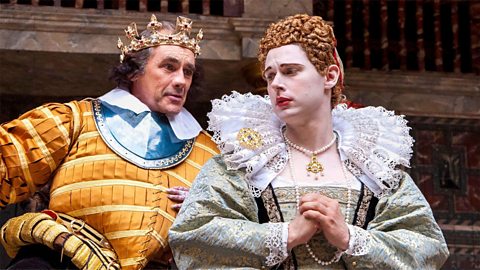
Before King Edward IV dies, Queen Elizabeth knows that Richard is her enemy, but she doesn’t fully realise what he is capable of. After the king’s death, Richard is made Lord Protector and uses his new influence to have Queen Elizabeth’s family and supporters killed.
At first, Queen Elizabeth makes her feelings about Richard clear, but then she learns to hide her hatred. After arguing with him, she pretends to agree to let him marry her daughter, his niece Princess Elizabeth. Instead, she promises her daughter to Richard’s enemy, Richmond, and plots Richard’s downfall.

Activity - Order it
What do these key quotations mean?
I fear our happiness is at the height.
Queen Elizabeth
Act 1, scene 3
As her husband lies dying, Queen Elizabeth recognises that she will lose personal and political power when she becomes a widow. Her family will become vulnerable to attack from others seeking power.
Welcome, destruction, blood, and massacre. I see, as in a map, the end of all.
Queen Elizabeth
Act 2, scene 4
Queen Elizabeth uses violent imagery in response to the news that her older son from her first marriage and her brother have been arrested.
Death and destruction dogs thee at thy heels;
Thy mother’s name is ominous to children.
Queen Elizabeth
Act 4, scene 1
When Queen Elizabeth discovers that Richard is to become king, she urges her son, the Marquis of Dorset, to run away. She uses personification and alliteration to add power to her words. Personification is when objects are given human qualities and alliteration is the use of the same letter at the beginning of a series of connected words. Dorset is the only one of her sons to survive.
Listen to a scene
Listen to this audio clip from Act 4, scene 1. Queen Elizabeth is distressed that she is being kept from seeing her sons, the two princes. They have been locked in the Tower of London by Richard.
Queen Elizabeth: Pity, you ancient stones, those tender babes
Whom envy hath immured within your walls!
Rough cradle for such little pretty ones!
Rude, ragged nurse, old sullen playfellow
For tender princes, use my babies well!
So foolish sorrow bids your stones farewell.
What literary device does Queen Elizabeth use to describe the Tower of London?
She personifies the Tower, comparing it to a “Rude ragged nurse, old sullen playfellow”. Personification is when objects are given human qualities. These images combine negative words with childhood references to highlight the tragedy of placing the two young princes in this prison.
Test your knowledge
GCSE exam dates 2025
Find out everything you need to know about the 2025 GCSE exams including dates, timetables and changes to exams to get your revision in shape.

More on Richard III
Find out more by working through a topic
- count5 of 5
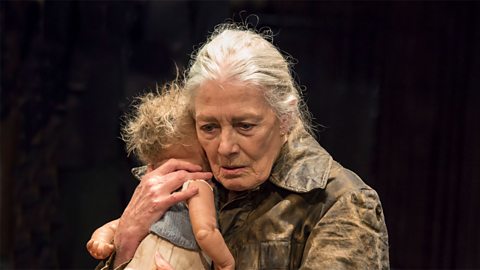
- count1 of 5

- count2 of 5
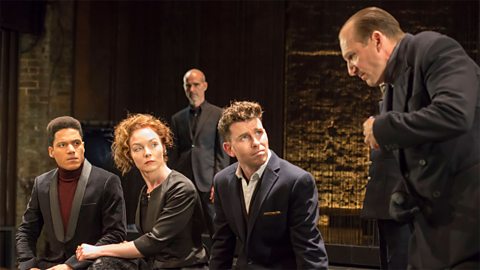
- count3 of 5
